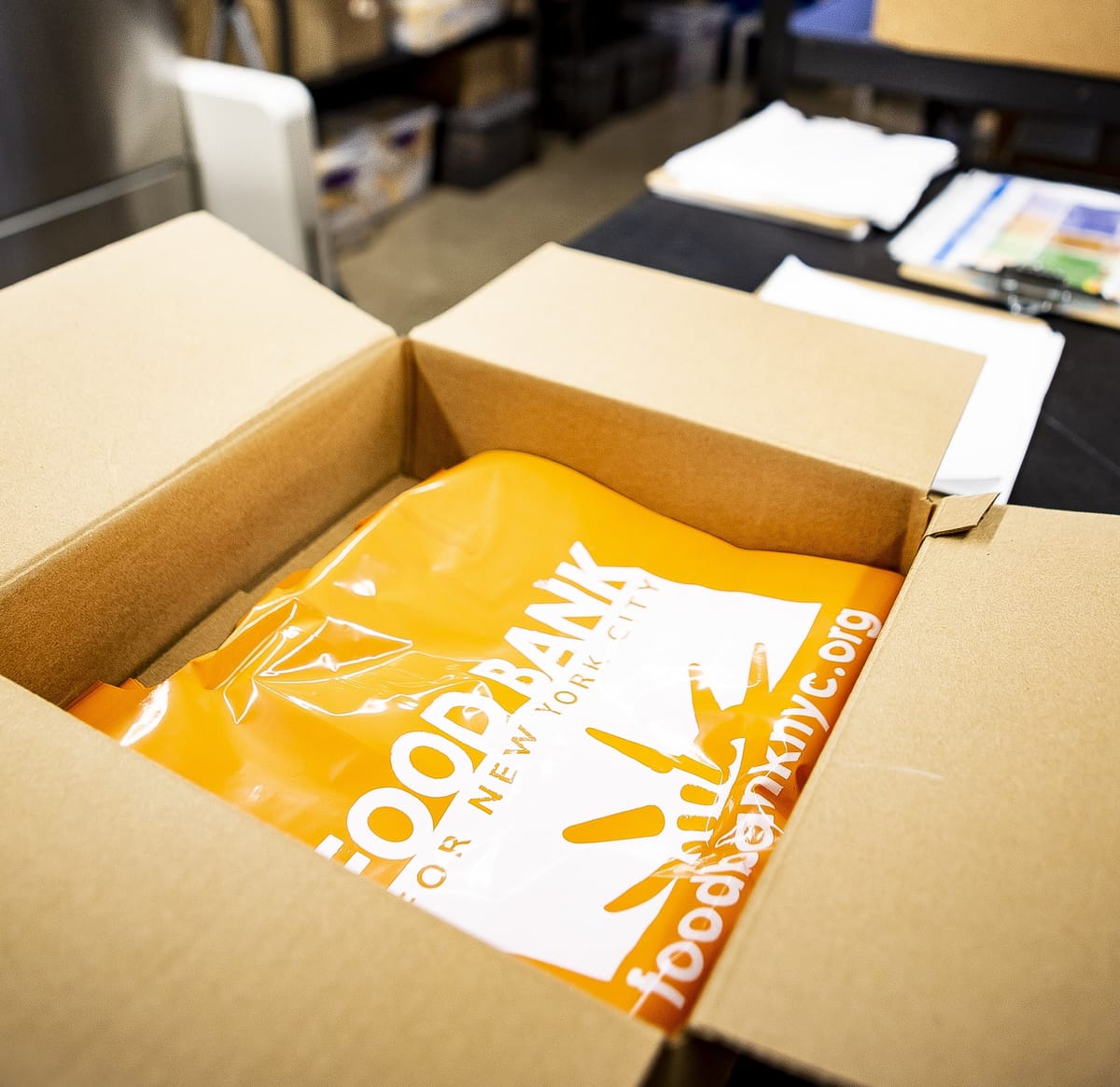Across Brooklyn, Providing Emergency Food Remains a Challenge


Even as service providers and food pantries across the city have stepped up to meet the surge in demand for free food prompted by the pandemic, several parts of Brooklyn remain underserved.
City Harvest estimates the number of visits to city food pantries and soup kitchens has jumped 33% since before the pandemic. Data from the organization Feeding America Action shows that the projected overall food insecurity rate in Brooklyn reached 20% last year, up from 14.3% just two years prior. The nonprofit No Kid Hungry recently testified at a City Council hearing that 1 in 3 children in New York City may have faced food insecurity in the last year, up significantly from 1 in 5 before the pandemic.
Much of the need, experts and elected officials say, comes from undocumented New Yorkers who can’t access federal benefits, seniors living on fixed incomes, and gig workers who have struggled to access unemployment funds. Gaps between Black and Latino New Yorkers and their white counterparts have also carried over from before the pandemic.
But the need also comes from families and middle-class professionals who have lost their jobs. And it has popped up across the borough, even in places that might not have been immediately obvious.
Pointing to recent data from the city’s Office of Food Policy that found the gap between the demand and available supply of emergency food was particularly acute in parts of his district, southern Brooklyn Senator Andrew Gounardes, who represents parts of Bay Ridge, Bensonhurst, and Dyker Heights, said: “there’s a deeper story here about people who are not able regularly to put food on own table.”
Dr. Melony Samuels, executive director of the Brooklyn-based Campaign Against Hunger, seconded that notion.
“The need is widespread in Brooklyn and the other boroughs,” Samuels said. “Including areas where we would not have once have looked in that direction.”
Meeting that need has required a herculean effort. The Campaign Against Hunger moved into a temporary 20,000 square-foot warehouse in Canarsie to create a food hub with space for social distancing and established hundreds of partnerships with community-based organizations who distribute food in neighborhoods they know best.
“We’re going to high needs areas and getting inside the nitty-gritty,” said Samuels.
How can the city and state better support that work?
Gounardes, who recently organized a roundtable with food providers to better understand their needs, says that in the short-term, the government could help create networks of providers to allow them to better share resources and undistributed food. More communal refrigeration space to store perishable food would also help.
But “the biggest and most immediate role” government can play, he says, is to adequately fund food delivery services, citing the Nourish New York program, a $35-million COVID-era initiative that connects upstate farms with food banks.
The Senate recently passed legislation to make the program permanent, and Gounardes said he wants to “significantly increase funding to that, to $50 million this year in the budget at a minimum, to really make sure we create that pipeline and keep that food pumping through.”
Samuels also emphasized the importance of additional emergency funding to food providers, and said her organization had been heavily reliant on private donations to expand.
Longer-term, many believe, the city’s food system needs to change in more fundamental ways. Last month, the city unveiled its first 10-year food policy plan, a set of policy proposals designed to “reach a more equitable, sustainable, and healthy food system by 2031.”
Proposals range from creating new spaces for urban farming and enabling the use of SNAP benefits online to supporting the development of neighborhood-based food hubs and reducing greenhouse gas emissions from the food system. Several leading mayoral candidates have also spoken at length about their plans to address hunger, public nutrition, school meals, urban agriculture, and more.
Those proposals may take years to accomplish, and the need will inevitably remain even after the majority of city residents have received a vaccine. But on-the-ground organizations like the campaign against hunger are already thinking ahead.
“We’re looking at this as an opportune time to build a better food system,” Samuels said. “We’re not trying to just be a stop-gap for COVID-19. What we’re trying to do is build a system within our community that works.”





